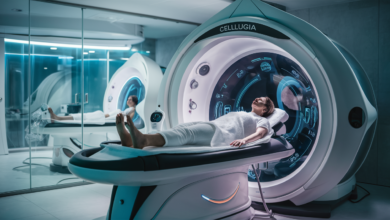Inomyalgia – Symptoms, Causes, Diagnosis, and Treatment Guide

hronic pain conditions have become a growing concern in modern healthcare, affecting millions of individuals worldwide. One such condition that has gained attention is inomyalgia, a disorder characterized by persistent muscle pain, fatigue, and widespread discomfort. Similar in nature to fibromyalgia, inomyalgia impacts not only physical health but also emotional and mental well-being. Understanding inomyalgia is essential for patients, caregivers, and healthcare professionals as it allows for better diagnosis, treatment, and lifestyle management. This article explores inomyalgia in detail, focusing on its symptoms, causes, diagnostic methods, and treatment options.
What is Inomyalgia?
Inomyalgia is a chronic pain condition defined by widespread muscle pain and tenderness. Unlike temporary soreness caused by physical activity, the discomfort in inomyalgia is persistent and often accompanied by additional symptoms such as fatigue, poor sleep, and cognitive issues. The name itself comes from “ino,” meaning muscle fiber, and “myalgia,” meaning pain.
The condition is still under study, and much like fibromyalgia, it can be misunderstood or misdiagnosed. While it is not considered life-threatening, it significantly affects the quality of life, making daily tasks difficult and lowering productivity.
Common Symptoms of Inomyalgia
The symptoms of inomyalgia vary among individuals, but some of the most commonly reported include:
-
Widespread Muscle Pain: Persistent soreness, stiffness, and aching across different muscle groups.
-
Chronic Fatigue: Even after a full night’s rest, patients often feel tired and lack energy.
-
Sleep Disturbances: Difficulty falling or staying asleep, along with restless sleep patterns.
-
Cognitive Issues: Often referred to as “brain fog,” this includes trouble focusing, memory lapses, and poor concentration.
-
Headaches and Migraines: Many patients report frequent tension headaches or migraines.
-
Mood Disorders: Anxiety and depression are common due to the long-term impact of chronic pain.
Symptoms often flare up in response to stress, physical exertion, or changes in weather, making it a condition that requires careful management.
Causes and Risk Factors of Inomyalgia
The exact cause of inomyalgia is not fully understood, but researchers believe it is the result of multiple factors. These include:
-
Neurological Factors: An imbalance in how the brain processes pain signals may contribute to increased sensitivity.
-
Genetic Predisposition: A family history of chronic pain disorders increases the likelihood of developing inomyalgia.
-
Stress and Trauma: Both physical and emotional trauma are known triggers for the onset of chronic pain conditions.
-
Hormonal Imbalances: Abnormalities in stress hormones such as cortisol may influence pain perception.
-
Sleep Problems: Poor-quality sleep worsens pain sensitivity and fatigue, creating a vicious cycle.
Environmental factors such as poor lifestyle habits, sedentary routines, or long-term stress may also aggravate symptoms.
How Inomyalgia is Diagnosed
Diagnosing inomyalgia can be challenging due to the overlap of symptoms with other chronic conditions such as fibromyalgia, chronic fatigue syndrome, and arthritis. Healthcare providers typically follow these steps:
-
Medical History Review: Understanding the patient’s symptoms, duration, and potential triggers.
-
Physical Examination: Identifying tender points in the muscles and ruling out other conditions.
-
Blood Tests: While no test confirms inomyalgia, blood work helps exclude thyroid issues, infections, or autoimmune disorders.
-
Symptom Duration: Pain and fatigue lasting more than three months are often criteria for diagnosis.
Because of its complexity, many patients may see multiple specialists before receiving an accurate diagnosis.
Treatment Options for Inomyalgia
Though there is no definitive cure for inomyalgia, various treatments can help manage symptoms and improve quality of life. Common treatment strategies include:
1. Medications
Doctors may prescribe pain relievers, antidepressants, or muscle relaxants to ease discomfort and improve sleep.
2. Physical Therapy
Regular exercise, stretching, and low-impact activities such as swimming or yoga help reduce muscle stiffness and improve mobility.
3. Lifestyle Modifications
Balanced diets, regular sleep schedules, and stress management practices play a vital role in symptom control.
4. Cognitive Behavioral Therapy (CBT)
CBT helps patients cope with the emotional impact of chronic pain and provides tools to manage stress and anxiety.
5. Alternative Therapies
Acupuncture, massage, meditation, and aromatherapy are increasingly used by patients seeking natural relief methods.
A combination of these approaches is often most effective, tailored to each patient’s unique symptoms and needs.
Living with Inomyalgia
Managing inomyalgia requires patience, resilience, and a comprehensive approach. Many patients find support groups helpful, as they provide a sense of community and understanding. Staying active within one’s limits, practicing mindfulness, and maintaining open communication with healthcare providers are critical steps to living a fulfilling life despite the condition.
Conclusion
Inomyalgia is a complex chronic pain condition that affects the body, mind, and daily life of those living with it. While there is no permanent cure, awareness and understanding of the disorder help in early diagnosis and effective treatment. By combining medical support, lifestyle adjustments, and alternative therapies, patients can significantly reduce their symptoms and improve their overall quality of life. As research continues, better treatment options and deeper insights into inomyalgia will emerge, offering hope to millions affected by this challenging condition.
FAQ about Inomyalgia
Q1: What is the difference between inomyalgia and fibromyalgia?
A: Both conditions share similarities, but inomyalgia is often considered a variant or related disorder with muscle-focused pain, while fibromyalgia encompasses widespread pain with additional systemic symptoms.
Q2: Is inomyalgia curable?
A: Currently, there is no cure, but symptoms can be managed through medication, therapy, lifestyle changes, and alternative treatments.
Q3: Can exercise help with inomyalgia?
A: Yes, low-impact exercises like yoga, swimming, or walking can reduce stiffness, improve mobility, and boost overall well-being.
Q4: Who is most at risk of developing inomyalgia?
A: Individuals with a family history of chronic pain conditions, high stress levels, or prior trauma are at greater risk.
Q5: Can diet affect inomyalgia symptoms?
A: Yes, a balanced diet rich in anti-inflammatory foods, vitamins, and minerals can help manage symptoms and improve energy levels.



